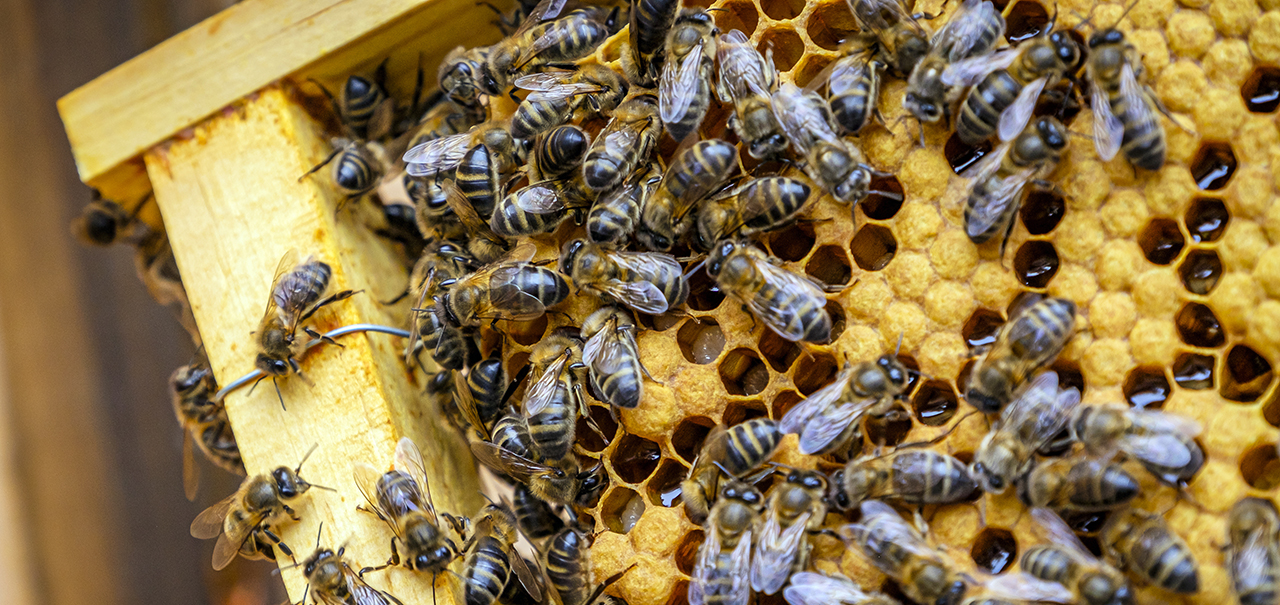Urban beekeeping is essential for bee conservation and city biodiversity. Cities can enhance ecosystems and agricultural output by providing bee habitats. Bees help flowering plants reproduce, including many crops that sustain our food chain. Bees help plants produce fruits and seeds, ensuring their survival and biodiversity. Due to habitat loss, pesticide use, climate change, and diseases, bee numbers worldwide have declined. Urban beekeeping supports local ecosystems and agricultural productivity while engaging communities in sustainable practices.
Community gardens are ideal for urban beekeeping, providing bees with different foraging alternatives and educating the public about bees. Community gardens can host pollinator and beekeeping programs. Urban beekeeping requires public awareness of bees and their preservation.
Having interested people help with hive care, honey extraction, and other beekeeping responsibilities can be enjoyable. Rooftop beekeeping turns unused urban spaces into bee sanctuaries. Proper planning and equipment can help rooftop beekeepers thrive. Urban beekeeping needs public and policymaker support. Education, workshops, and community outreach programs can raise awareness of bees and support urban beekeeping.
Stings, swarms, and climate change are urban beekeeping challenges. Urban beekeepers can safely collect and move swarms with local beekeeping organizations. Educational efforts, public events, and social media can increase urban beekeeping participation. Urban beekeeping can be promoted by government grants, tax exemptions, and subsidized equipment.
Bee-friendly city planning, biodiversity, and sustainability require collaboration with urban planners and environmental authorities. Beekeeping is a sustainable way to save bees and boost biodiversity. Bee-friendly cities, communal gardens, and rooftop beekeeping can make cities pollinator-friendly. Urban beekeeping needs government backing, educational initiatives, and stakeholder participation.
Beekeeping can save bees by establishing bee-friendly environments and supporting pollinators. Lavender, sunflowers, wildflowers, and herbs like rosemary and thyme are bee-friendly urban garden plants. Raise awareness, attend community events, and promote bee-friendly policies to encourage urban beekeeping in your city. Local beekeepers sell honey and beeswax.
Habitat building, bee health monitoring, swarm capture and relocation, selective breeding, and pollination support can benefit bees. Some beekeeping methods harm bees. Irresponsible beekeeping, pesticide misuse, and honey and beeswax overexploitation can injure bee colonies and decrease bee numbers.
Evidence suggests that ancient humans watched and interacted with bees long before beekeeping began. Beekeeping is also documented in ancient Mesopotamia, Greece, Rome, Asia, China, and India. Many locations kept bees in hollowed-out logs or woven baskets. Reverend Lorenzo Lorraine Langstroth’s 19th-century invention of movable frame hives revolutionized beekeeping by making it easier to manage colonies with less bee stress.
Beekeeping yields vary depending on colony strength, nectar, and pollen availability, weather, and beekeeping procedures. A healthy, well-managed beehive can generate 30–100 pounds (14–45 kg) of honey each year. Beekeeping is vital to the ecosystem, with colony size and vigor affecting honey production. A large, healthy colony with many worker bees can forage more efficiently and bring in more nectar, resulting in higher honey output. Honey production depends on the availability of nectar-rich flowers near the hive, as bees regurgitate and evaporate nectar to make honey. Weather affects nectar-producing flowers and honey production.
Regular hive inspections, additional feeding, and illness and insect prevention help bee colonies thrive. Langstroth, top bar, and Warre hives affect honey storage and extraction. Beekeeping is much more than honey—it’s about bees and the colony. Beekeepers should leave enough honey in the hive for winter when fodder is scarce. Experienced beekeepers understand local circumstances and manage their hives to maximize honey production and bee health.
Beekeepers’ suits protect against bee stings but are not sting-proof. Full-length suits, veils, and gloves are typical. Bees may still locate cracks, openings, exposed skin, and ripped or worn cloth. Beekeepers should check their suits for damage, make sure they fit, and use gentle methods to lessen stings.
If you like this article you might like this article too “Vulture Bees—Nature’s Unique Recyclers & Honey Producers“

